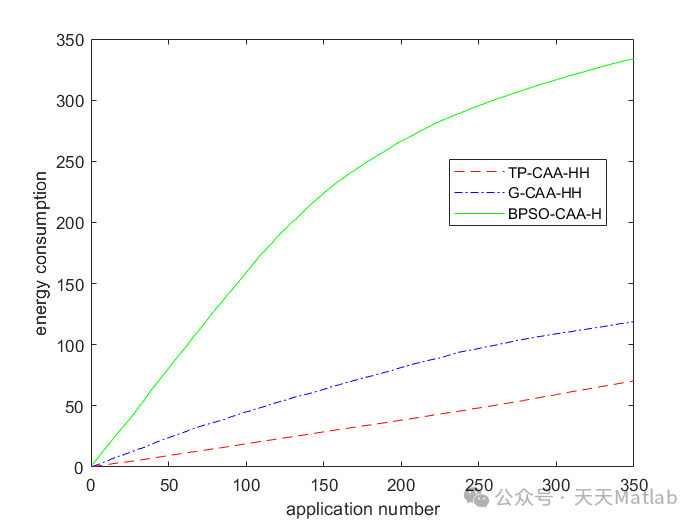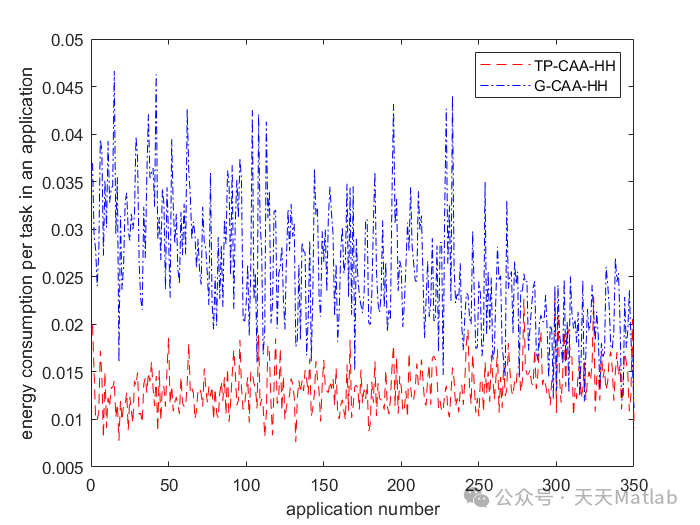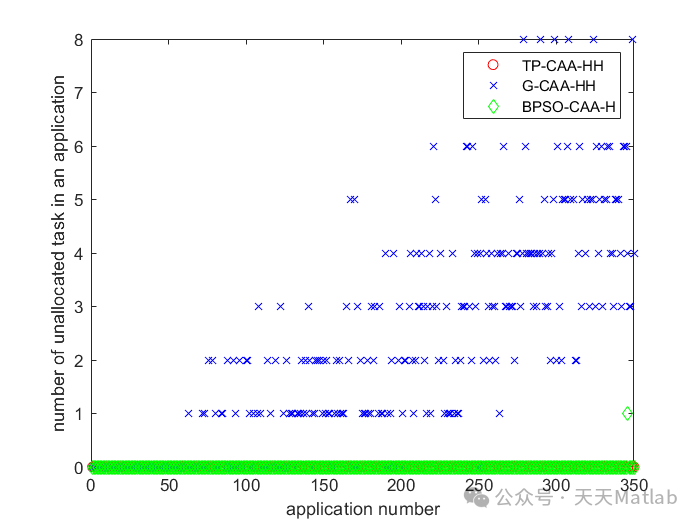✅ Author Profile: A research enthusiast and Matlab simulation developer, skilled in data processing, modeling simulation, program design, complete code acquisition, paper reproduction, and scientific simulation.
🍎 Previous reviews, follow the personal homepage:Matlab Research Studio
🍊 Personal motto: Investigate to gain knowledge, complete Matlab code and simulation consultation available via private message.
Intelligent Optimization Algorithms Neural Network Prediction Radar Communication Wireless Sensors Power Systems
Signal Processing Image Processing Path Planning Cellular Automata Unmanned Aerial Vehicles
Physical Applications Machine Learning Series Workshop Scheduling Series Filtering and Tracking Series Data Analysis Series
Image Processing Series
🔥 Content Introduction
Wireless Sensor Networks (WSN) have been widely used in fields such as environmental monitoring, smart homes, industrial control, and military reconnaissance due to their low power consumption, low cost, and self-organization features. However, as application scenarios become increasingly complex, traditional homogeneous WSNs face numerous challenges in data processing capabilities, energy efficiency, and network lifespan. Therefore, heterogeneous WSNs, composed of heterogeneous nodes, have emerged, demonstrating strong application potential. In heterogeneous WSNs, how to effectively allocate tasks to fully leverage the advantages of different types of nodes to improve overall performance and extend network lifespan has become an important research topic. This article will delve into task allocation strategies in wireless sensor networks based on heterogeneous clusters, analyze key issues and challenges, and review existing solutions to provide references for future research directions.
1. Advantages and Challenges of Heterogeneous Cluster Wireless Sensor Networks
A heterogeneous WSN refers to a network that includes different types of sensor nodes, which exhibit significant differences in computing power, storage capacity, communication range, and energy supply. Through reasonable deployment and task allocation, heterogeneous WSNs can effectively overcome the limitations of traditional homogeneous WSNs, achieving higher efficiency and performance. Specifically, the advantages of heterogeneous WSNs are reflected in the following aspects:
- Enhanced Data Processing Capability: Nodes with strong computing power can undertake complex data processing tasks, such as data fusion and feature extraction, reducing the amount of data transmitted and lowering the network burden.
- Extended Network Lifespan: By reasonably allocating high-energy-consuming tasks to nodes with sufficient energy reserves, energy consumption in the network can be balanced, avoiding network failure due to individual nodes depleting energy too early.
- Improved Network Coverage: Nodes with a larger communication range can undertake long-distance data transmission tasks, effectively expanding the network’s coverage and improving accessibility.
- Enhanced Network Robustness: Different types of nodes can provide various functions and services; when some nodes fail, other types of nodes can take over their tasks, improving the network’s fault tolerance.
However, heterogeneous WSNs also face numerous challenges, particularly the difficulty of task allocation. These challenges mainly include:
- Node Capability Heterogeneity: Different nodes have varying capabilities and resource limitations, requiring task allocation based on their characteristics to achieve optimal performance.
- Network Dynamics: Wireless sensor networks are often deployed in dynamic environments, where node states (e.g., energy levels, link quality) change over time, necessitating dynamic adjustments to task allocation strategies.
- Task Complexity: Tasks in practical applications are often very complex and may involve collaboration among multiple nodes, requiring the design of suitable task decomposition and allocation mechanisms.
- Energy Efficiency: Energy is the most valuable resource in WSNs; how to minimize energy consumption while meeting task requirements is a key objective in designing task allocation strategies.
- Fairness in Resource Allocation: Task allocation should not overly rely on certain nodes, as this may lead to premature energy depletion of these nodes, affecting the overall lifespan of the network.
2. Task Allocation Strategies Based on Heterogeneous Clusters
To address the above challenges, researchers have proposed various task allocation strategies based on heterogeneous clusters. These strategies are typically based on different optimization objectives and algorithms, aiming to fully utilize the advantages of heterogeneous nodes to achieve optimal network performance.
-
Energy-Efficiency-Based Task Allocation Strategies:
The main goal of these strategies is to reduce overall energy consumption in the network and extend its lifespan. The core idea is to allocate high-energy-consuming tasks to nodes with sufficient energy reserves and low-energy tasks to energy-constrained nodes. Common implementation methods include:
- Energy-Aware Routing: Selecting routing paths based on the remaining energy of nodes to avoid frequent use of nodes with low energy.
- Dynamic Task Scheduling: Dynamically adjusting task allocation based on the energy levels of nodes to avoid overloading nodes.
- Genetic Algorithm-Based Task Allocation: Utilizing genetic algorithms to search for optimal task allocation schemes to minimize overall energy consumption in the network.
Data Quality-Based Task Allocation Strategies:
The goal of these strategies is to improve data quality, including accuracy, completeness, and timeliness. The core idea is to allocate tasks that require high data quality to nodes with high-precision sensors and reliable communication links. Common implementation methods include:
- Fuzzy Logic-Based Task Allocation: Using fuzzy logic to evaluate the data quality of nodes and allocate tasks to nodes with higher data quality.
- Collaborative Filtering-Based Task Allocation: Utilizing collaborative filtering algorithms to analyze similarities between nodes and allocate tasks to nodes with similar characteristics.
- Data Fusion-Based Task Allocation: Integrating sensor data from different nodes through data fusion algorithms to improve data accuracy and reliability.
⛳️ Running Results



🔗 References
[1] Shi Hongli. Research on Routing Algorithms Based on k-Means Algorithm in Wireless Sensor Networks [D]. Chengdu University of Technology [2025-03-26]. DOI: CNKI:CDMD:2.1012.499873.
[2] Chen Tao. Research on Energy-Balanced Clustering Routing Algorithms in Heterogeneous Wireless Sensor Networks [D]. Hangzhou Dianzi University, 2015. DOI: 10.7666/d.D717482.
[3] Yang Shuling. Research on Energy-Based Clustering Routing Protocols in Wireless Sensor Networks [D]. China University of Petroleum, 2010. DOI: CNKI:CDMD:2.2009.222698.
📣 Partial Code
🎈 Some theoretical references from network literature, please contact the author for removal if there is any infringement.
👇 Follow me to receive a wealth of Matlab e-books and mathematical modeling materials
🏆 Our team specializes in guiding customized MATLAB simulations in various research fields, helping to realize research dreams:
🌈 Various intelligent optimization algorithm improvements and applications
Production scheduling, economic scheduling, assembly line scheduling, charging optimization, workshop scheduling, departure optimization, reservoir scheduling, three-dimensional packing, logistics site selection, cargo location optimization, bus scheduling optimization, charging pile layout optimization, workshop layout optimization, container ship loading optimization, pump combination optimization, medical resource allocation optimization, facility layout optimization, visual domain base station and drone site selection optimization, knapsack problem, wind farm layout, time slot allocation optimization, optimal distributed generation unit allocation, multi-stage pipeline maintenance, factory-center-demand point three-level site selection problem, emergency life material distribution center site selection, base station site selection, road lamp post arrangement, hub node deployment, transmission line typhoon monitoring devices, container scheduling, unit optimization, investment optimization portfolio, cloud server combination optimization, antenna linear array distribution optimization, CVRP problem, VRPPD problem, multi-center VRP problem, multi-layer network VRP problem, multi-center multi-vehicle VRP problem, dynamic VRP problem, two-layer vehicle routing planning (2E-VRP), electric vehicle routing planning (EVRP), hybrid vehicle routing planning, mixed flow shop problem, order splitting scheduling problem, bus scheduling optimization problem, flight shuttle vehicle scheduling problem, site selection path planning problem, port scheduling, port bridge scheduling, parking space allocation, airport flight scheduling, leak source localization
🌈 Machine learning and deep learning time series, regression, classification, clustering, and dimensionality reduction
2.1 BP time series, regression prediction, and classification
2.2 ENS voice neural network time series, regression prediction, and classification
2.3 SVM/CNN-SVM/LSSVM/RVM support vector machine series time series, regression prediction, and classification
2.4 CNN|TCN|GCN convolutional neural network series time series, regression prediction, and classification
2.5 ELM/KELM/RELM/DELM extreme learning machine series time series, regression prediction, and classification
2.6 GRU/Bi-GRU/CNN-GRU/CNN-BiGRU gated neural network time series, regression prediction, and classification
2.7 Elman recurrent neural network time series, regression prediction, and classification
2.8 LSTM/BiLSTM/CNN-LSTM/CNN-BiLSTM long short-term memory neural network series time series, regression prediction, and classification
2.9 RBF radial basis function neural network time series, regression prediction, and classification
2.10 DBN deep belief network time series, regression prediction, and classification
2.11 FNN fuzzy neural network time series, regression prediction
2.12 RF random forest time series, regression prediction, and classification
2.13 BLS broad learning system time series, regression prediction, and classification
2.14 PNN pulse neural network classification
2.15 Fuzzy wavelet neural network prediction and classification
2.16 Time series, regression prediction, and classification
2.17 Time series, regression prediction, and classification
2.18 XGBOOST ensemble learning time series, regression prediction, and classification
2.19 Transform various combinations time series, regression prediction, and classification
Directions cover wind power prediction, photovoltaic prediction, battery life prediction, radiation source identification, traffic flow prediction, load forecasting, stock price prediction, PM2.5 concentration prediction, battery health status prediction, electricity consumption prediction, water body optical parameter inversion, NLOS signal identification, subway parking precision prediction, transformer fault diagnosis
🌈 In terms of image processing
Image recognition, image segmentation, image detection, image hiding, image registration, image stitching, image fusion, image enhancement, image compressed sensing
🌈 In terms of path planning
Traveling salesman problem (TSP), vehicle routing problem (VRP, MVRP, CVRP, VRPTW, etc.), UAV three-dimensional path planning, UAV collaboration, UAV formation, robot path planning, grid map path planning, multimodal transport problems, electric vehicle routing planning (EVRP), two-layer vehicle routing planning (2E-VRP), hybrid vehicle routing planning, ship trajectory planning, full path planning, warehouse patrol
🌈 In terms of UAV applications
UAV path planning, UAV control, UAV formation, UAV collaboration, UAV task allocation, UAV secure communication trajectory online optimization, vehicle collaborative UAV path planning
🌈 In terms of communication
Sensor deployment optimization, communication protocol optimization, routing optimization, target localization optimization, Dv-Hop localization optimization, Leach protocol optimization, WSN coverage optimization, multicast optimization, RSSI localization optimization, underwater communication, communication upload and download allocation
🌈 In terms of signal processing
Signal recognition, signal encryption, signal denoising, signal enhancement, radar signal processing, signal watermark embedding and extraction, EMG signals, EEG signals, signal timing optimization, ECG signals, DOA estimation, encoding and decoding, variational mode decomposition, pipeline leakage, filters, digital signal processing + transmission + analysis + denoising, digital signal modulation, bit error rate, signal estimation, DTMF, signal detection
🌈 In terms of power systems
Microgrid optimization, reactive power optimization, distribution network reconstruction, energy storage configuration, orderly charging, MPPT optimization, household electricity
🌈 In terms of cellular automata
Traffic flow, crowd evacuation, virus spread, crystal growth, metal corrosion
🌈 In terms of radar
Kalman filter tracking, trajectory association, trajectory fusion, SOC estimation, array optimization, NLOS identification
🌈 In terms of workshop scheduling
Zero-wait flow shop scheduling problem (NWFSP) , permutation flow shop scheduling problem (PFSP) , hybrid flow shop scheduling problem (HFSP) , zero idle flow shop scheduling problem (NIFSP), distributed permutation flow shop scheduling problem (DPFSP), blocking flow shop scheduling problem (BFSP)
👇